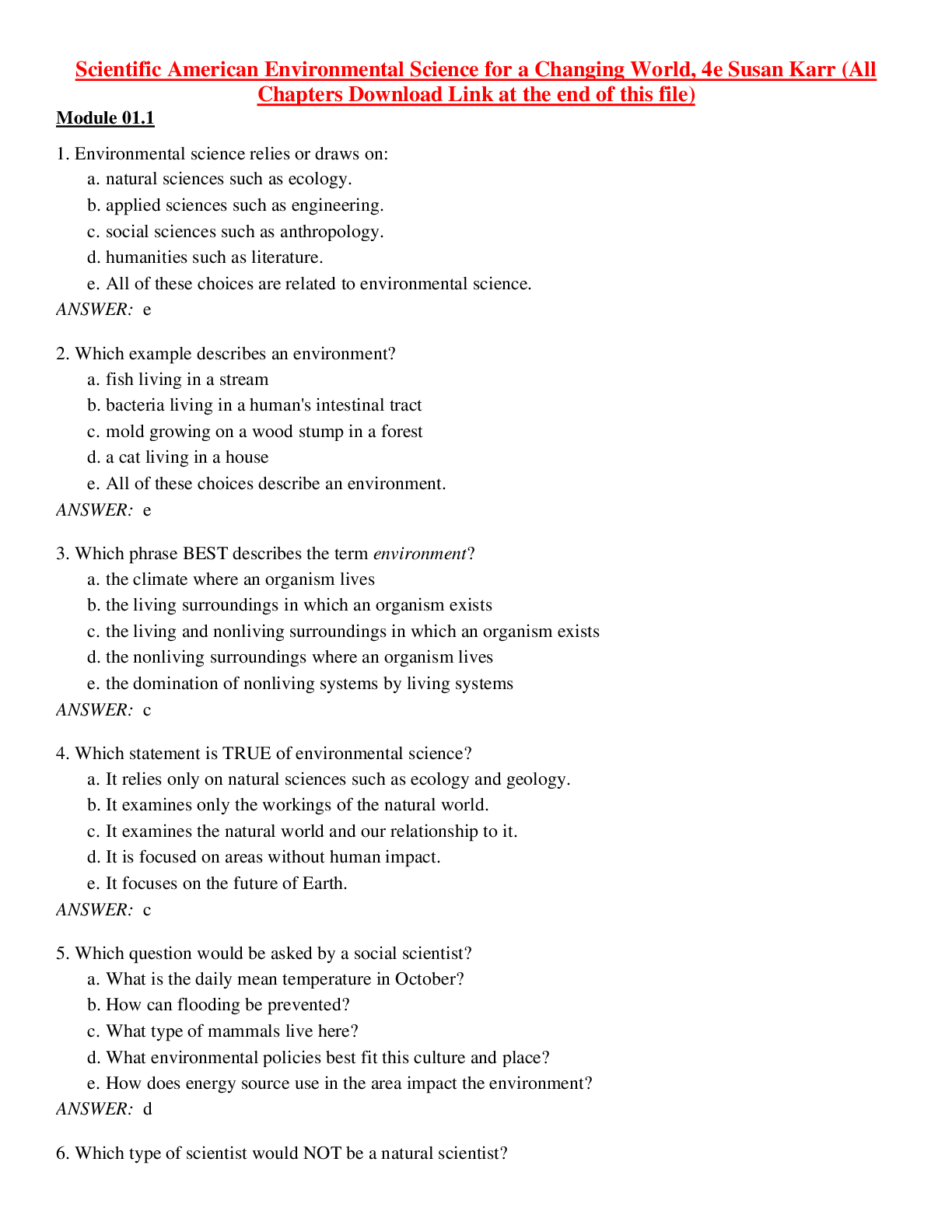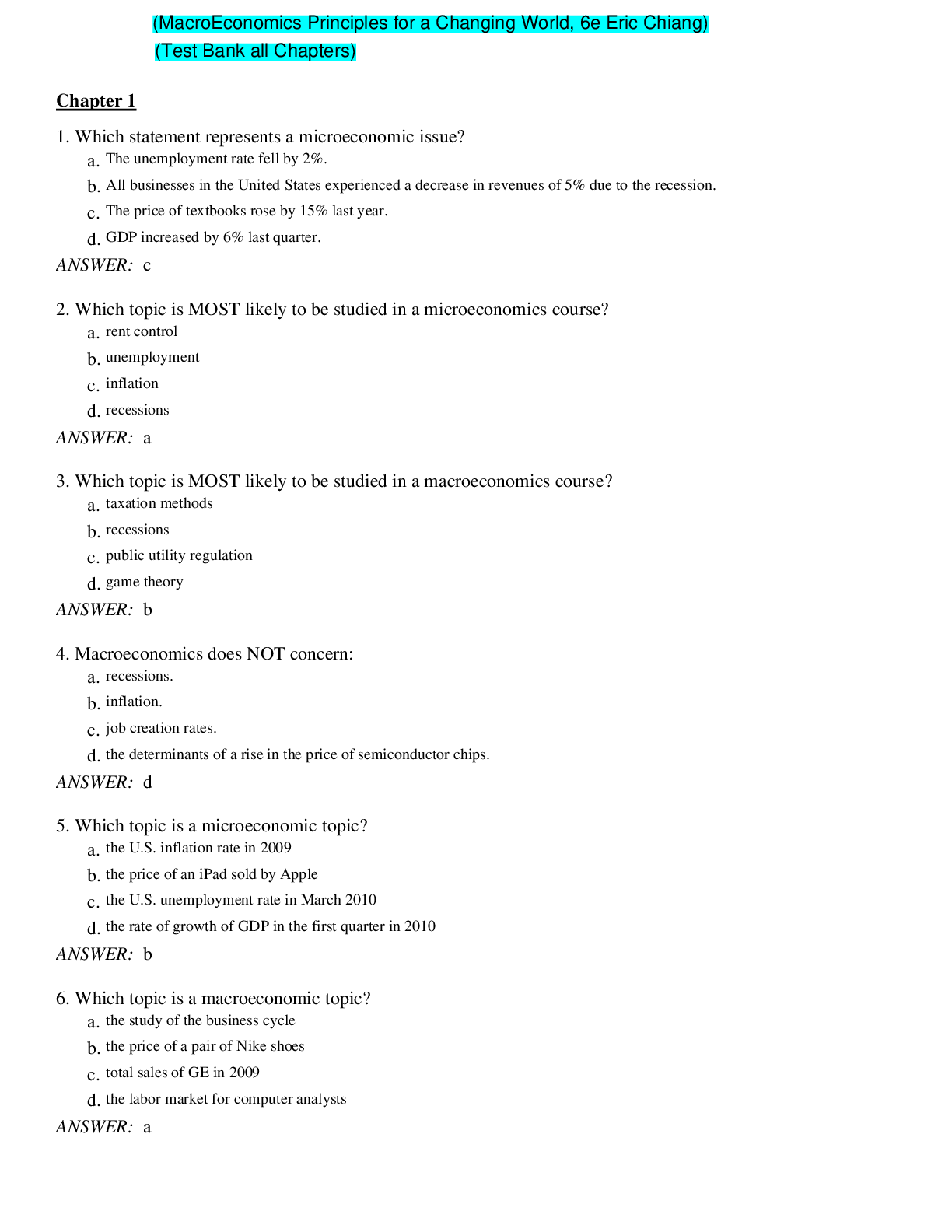*NURSING > TEST BANK > Test Bank Scientific American: Nutrition for a Changing World Chapter 18 Childhood Nutrition Multipl (All)
Test Bank Scientific American: Nutrition for a Changing World Chapter 18 Childhood Nutrition Multiple-Choice Questions
Document Content and Description Below
1. The Centers for Disease Control and Prevention reported ______ in food allergies from 1997 to 2007. A. an 18% increase B. a 50% decrease C. a 75% increase D. a 25% decrease E. no change Answ... er: A Type: Knowledge Difficulty: Medium Learning Objective: Describe how food allergies develop, and identify four food allergens that are common among children (Infographic 18.10) Keywords: food allergy prevalence 2. Growth charts can include A. height-for-age curves. B. weight-for-age curves. C. gender-specific charts. D. body mass index curves. E. All of the above. Answer: E Type: Knowledge Difficulty: Medium Learning Objective: Provide an overview of patterns of growth and development from preschool-aged children to early adolescence (puberty) (Infographic 18.1) Keywords: growth charts 3. Which of the following accurately describes growth charts? A. measures adults 21 years and older B. a reference against expected growth rates for the same age and gender C. only measure shoe size D. not reflective of risk for obesity E. not reflective of risk for undernutrition Answer: B Type: Comprehension Difficulty: Easy Learning Objective: Provide an overview of patterns of growth and development from preschool-aged children to early adolescence (puberty) (Infographic 18.1) Keywords: growth charts 4. A child is considered at risk for undernutrition if their body weight or height falls at or under the A. 75th percentile for their age. B. 50th percentile for their age. C. 25th percentile for their age. D. 10th percentile for their age. E. 5th percentile for their age. Answer: E Type: Knowledge Difficulty: Medium Learning Objective: Be familiar with growth chart measurements Keywords: growth charts 5. Which age group experiences the most growth? A. birth to one year (infancy) B. ages two to five years (preschool) C. ages six to 11 years (elementary school) D. ages 11 to 12 years (middle school) E. They all experience the same amount of growth. Answer: A Type: Comprehension Difficulty: Medium Learning Objective: Provide an overview of patterns of growth and development from preschool-aged children to early adolescence Keywords: patterns of growth in children 6. A 12-year-old boy who is in the 85th percentile for BMI for his age would be considered A. underweight. B. healthy weight. C. overweight. D. obese. E. None of the above. Answer: C Type: Application Difficulty: Medium Learning Objective: Describe how body mass index is used to assess if children are at a healthy weight for their age Keywords: BMI, growth charts 7. A body mass index in the 5th to 85th percentile is classified as A. underweight. B. healthy weight. C. overweight. D. obese. E. morbidly obese. Answer: B Type: Application Difficulty: Medium Learning Objective: Describe how body mass index is used to assess if children are at a healthy weight for their age Keywords: BMI, growth charts 8. What is the term for periods of accelerated physical development with associated changes in height and weight? A. body mass index B. growth charts C. expected growth rates D. growth spurts E. weight for age Answer: D Type: Knowledge Difficulty: Easy Learning Objective: Provide an overview of patterns of growth and development from preschool-aged children to early adolescence Keywords: growth spurts 9. An average increase of 2.5 inches in height and a weight gain of more than 11 pounds a year is characteristic of which of the following age groups? A. birth to 1 year (infancy) B. 2 to 5 years (preschool) C. 6 to 11 years (elementary school) D. 13 to 17 years (middle school to high school) E. 17 to 20 (college) Answer: D Type: application Difficulty: Hard Learning Objective: Provide an overview of patterns of growth and development from preschool-aged children to early adolescence Keywords: periods of growth 10. On average, approximately ____% of an adult body weight is gained during puberty. A. 10 B. 25 C. 50 D. 75 E. 100 Answer: C Type: Knowledge Difficulty: Medium Learning Objective: Provide an overview of patterns of growth and development from preschool-aged children to early adolescence Keywords: Periods of growth 11. According to the book, approximately 90% of U.S. children do not consume the recommended amount of A. grains. B. lean meat. C. dairy products. D. fruits and vegetables. E. water. Answer: D Type: Knowledge Difficulty: Medium Learning Objective: Identify at least three nutritional challenges for children and adolescents Keywords: Dietary Guidelines for Americans 12. According to the USDA, children consume less than 100% of the recommended amount of which food group? A. seafood and plant proteins B. vegetables C. fruits D. whole grains E. All of the above. Answer: E Type: Application Difficulty: Hard Learning Objective: Identify at least three nutritional challenges for children and adolescents Keywords: Dietary Guidelines for Americans 13. What is the number one source of empty calories from solid fats and added sugars (SoFAS) in U.S. children’s diets? A. pizza B. sugar-sweetened beverages C. dairy desserts D. sweet snacks and candy E. ready-to-eat cereals [Show More]
Last updated: 1 year ago
Preview 1 out of 15 pages
.png)
Reviews( 0 )
Document information
Connected school, study & course
About the document
Uploaded On
Sep 09, 2021
Number of pages
15
Written in
Additional information
This document has been written for:
Uploaded
Sep 09, 2021
Downloads
0
Views
81
.png)



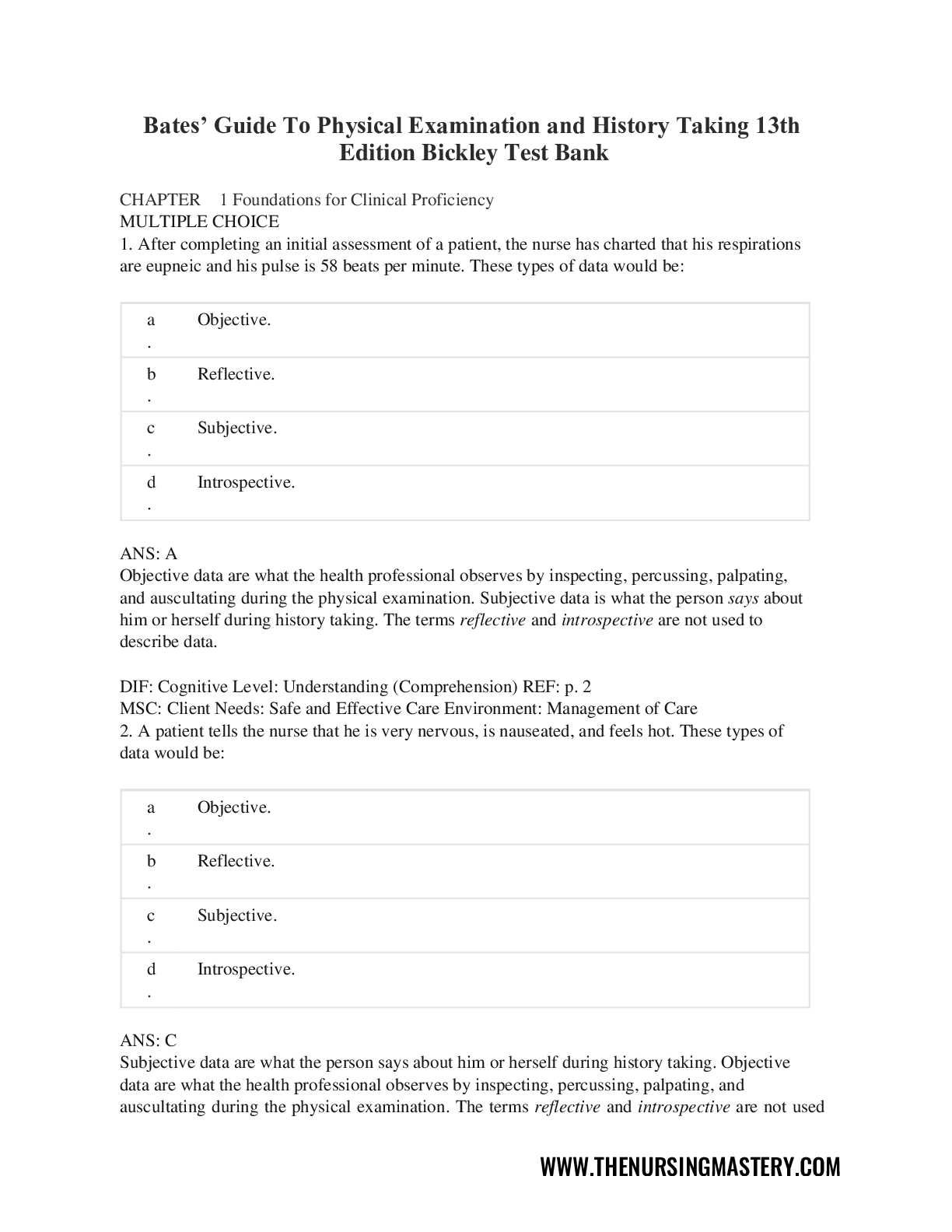
.png)
.png)
.png)

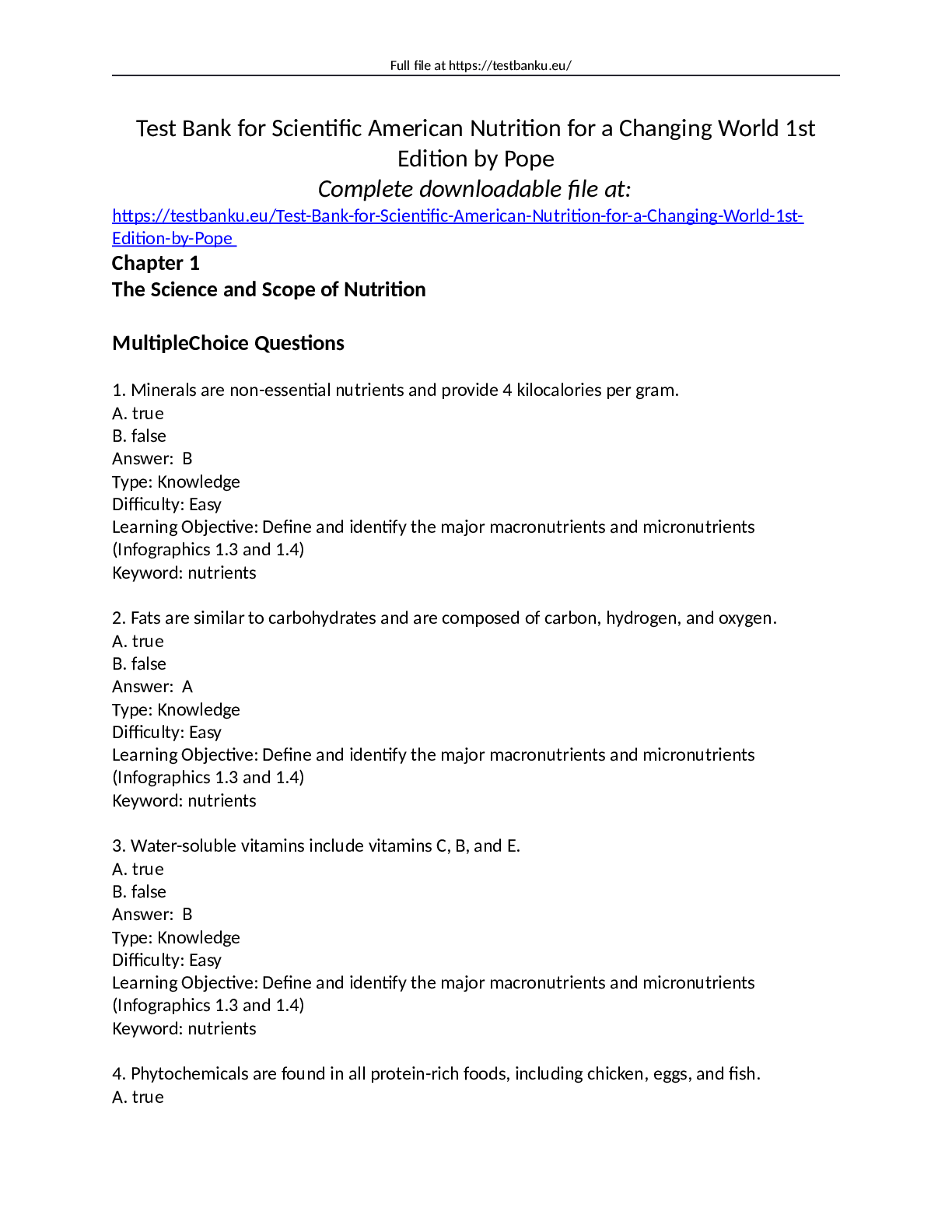
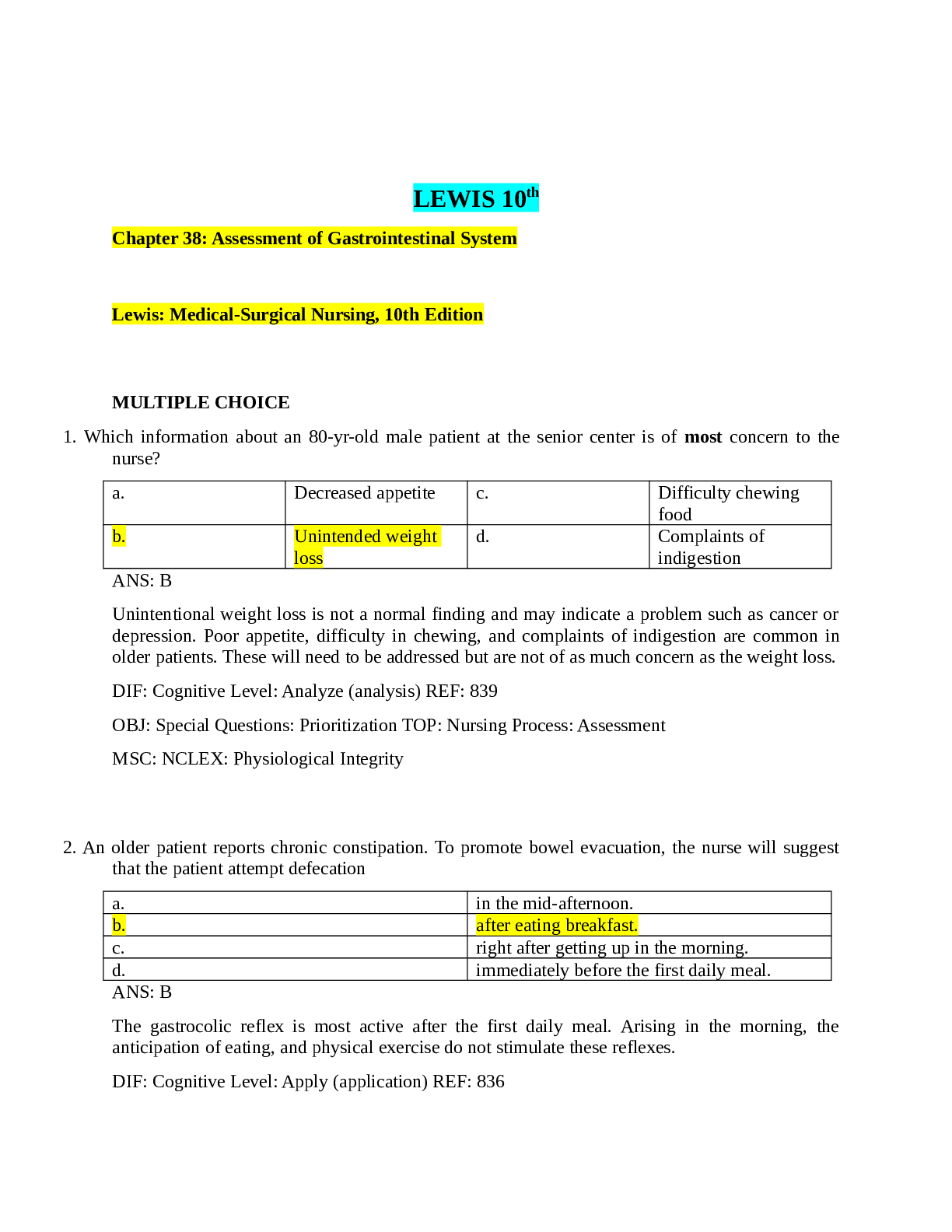

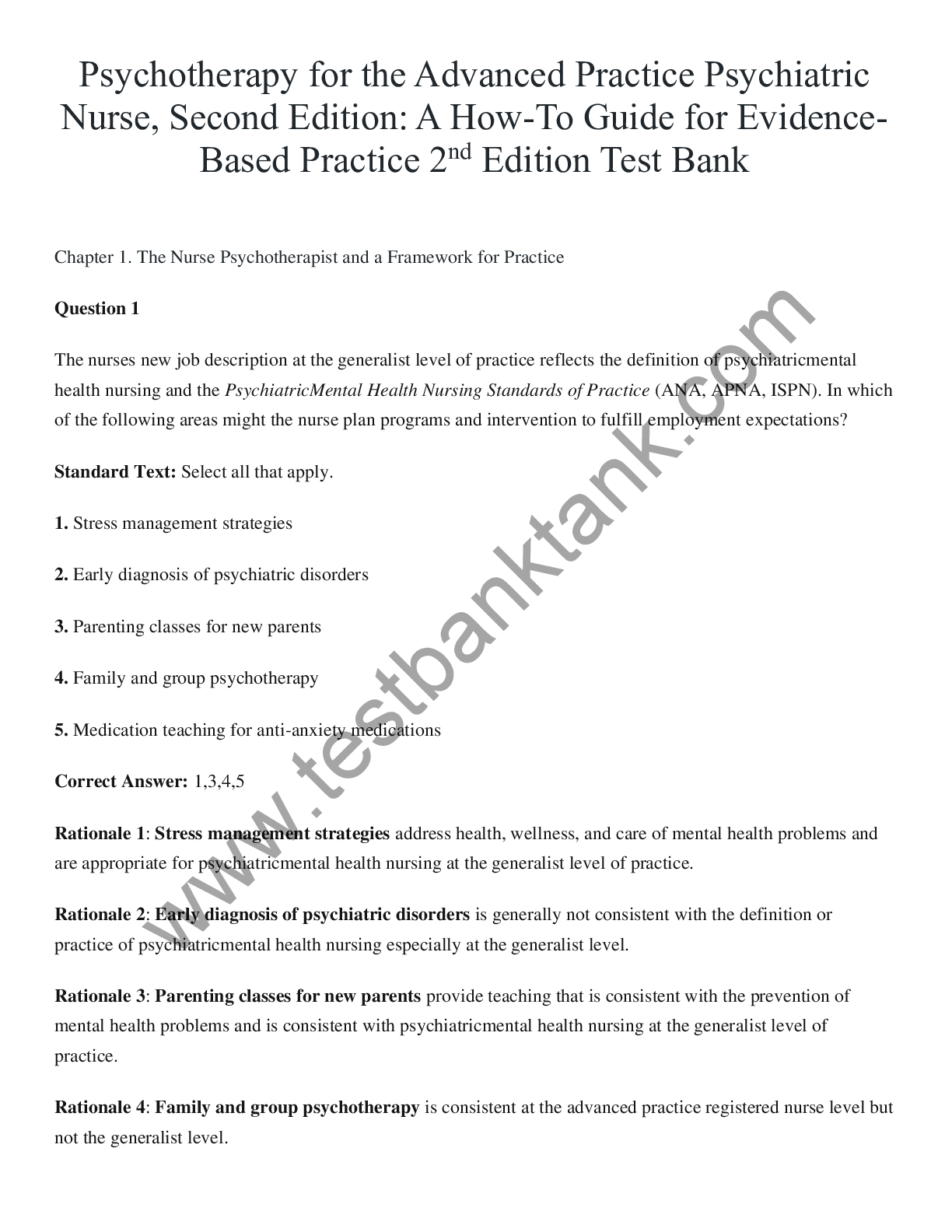

.png)

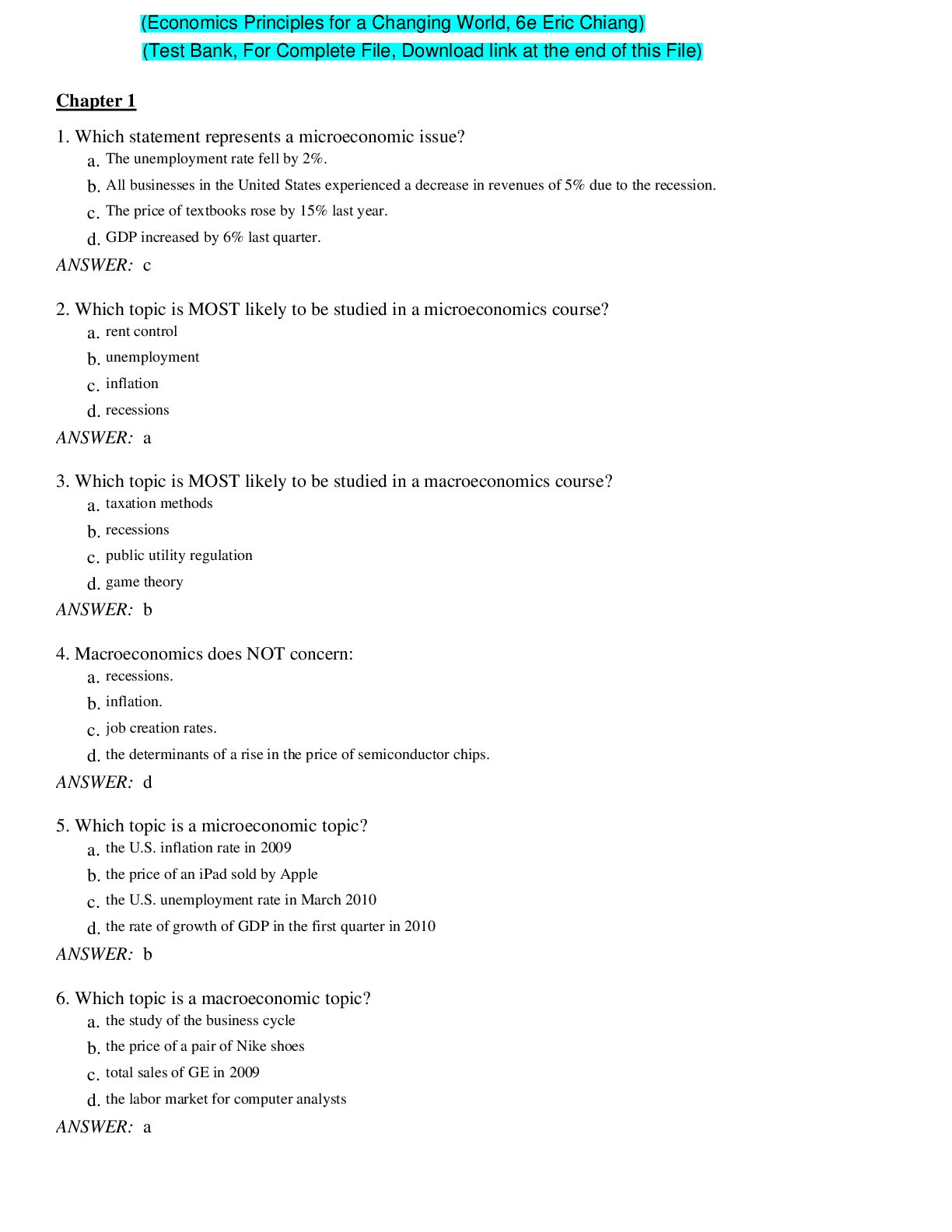
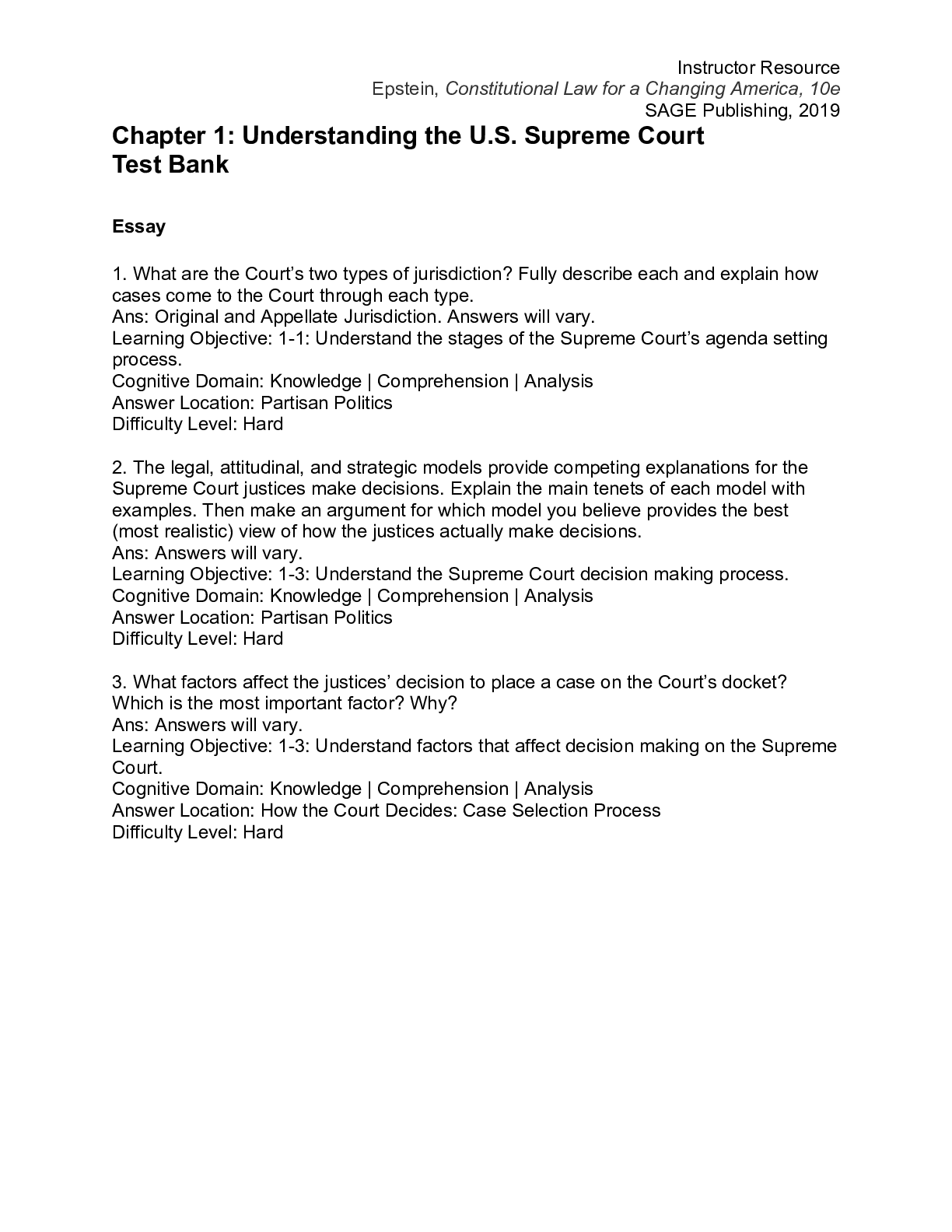
.png)
.png)

.png)
.png)
.png)
.png)
.png)
.png)
.png)
.png)

